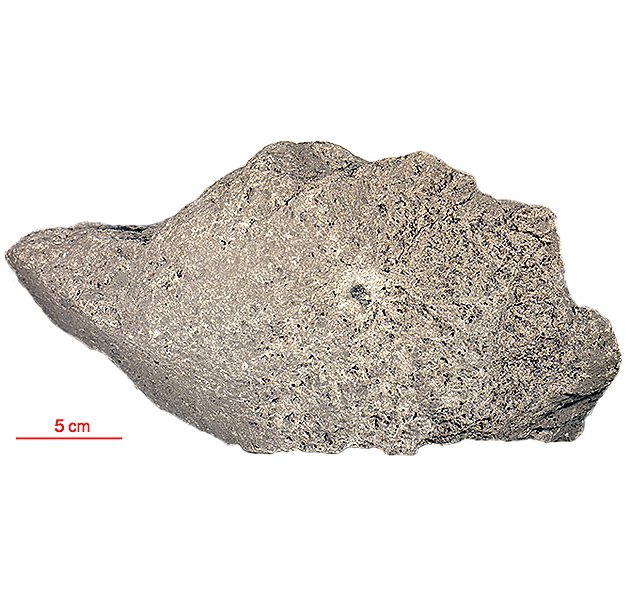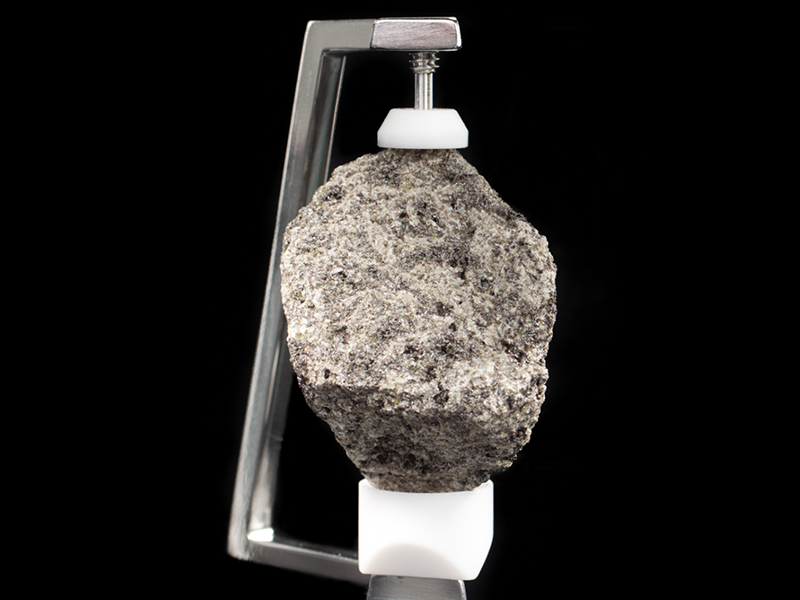
Fact sheet
15555 (called “Great Scott”, after the collector Dave Scott) is one of the largest samples returned from the moon and is representative of the basaltic samples found on the mare surface at Apollo 15. The bulk composition of 15555 is thought to represent that of a primitive volcanic liquid. It contains olivine and pyroxene phenocrysts and has a sub-ophitic, basaltic texture. Two generations of olivine are present. Both olivine and pyroxene crystals are chemically zoned. There is little evidence for shock in the minerals. Accessory minerals include cristobalite, ilmenite, ulvospinel, chromite, troilite and metallic iron. An unidentified Zr-Ti-Fe mineral (“phase Y”) has also been reported.
The sample weighed 9614 grams before analysis. It has been dated at 3.33±0.05 billion years (Ar/Ar).
Further details of this and other Apollo samples are here: http://curator.jsc.nasa.gov/lunar/
The Apollo 15 landing site was in the Apennine Highlands, and close to Hadley Rille — a long, narrow winding valley. Approximately 76 kg of lunar material, including soil, rock, core-tube and deep-core samples, were returned to Earth.
This mission was the first flight of the Lunar Roving Vehicle which allowed the astronauts to venture further from the Lunar Module than in previous missions. During three periods of extravehicular activity, or EVA, on July 31st, and August 1st and 2nd, Scott and Irwin completed a record 18 hours, 37 minutes of exploration, travelling 17.5 miles, in the first car that humans had ever driven on the Moon.
Apollo 15 was launched on 26 July 1971.







